How long does it take for custom aluminium profile, from custom to shipment?
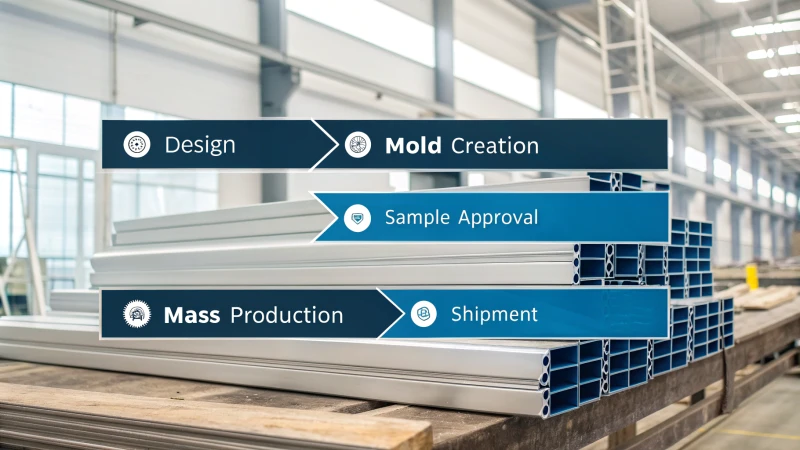
Navigating the production timeline of custom aluminum profiles is essential for keeping your project on track.
The timeline for producing custom aluminium profiles, from design to shipment, typically ranges from 20 to 25 days. This process includes confirming design drawings, mold creation, sample approval, mass production, and final shipment. Special circumstances can expedite this process to 7-10 days.
While understanding the standard timeline is helpful, delving deeper into each stage can provide insights into potential delays and how to mitigate them. This comprehensive guide will explore each phase in detail, offering tips on how to streamline the process and ensure timely delivery.
Custom aluminium profiles take 20-25 days from design to shipment.True
This is the typical timeline mentioned for producing custom profiles.
Expedited production of aluminium profiles can take 7-10 days.True
Special circumstances can speed up the process to this shorter timeframe.
What Are the Steps Involved in Creating Custom Aluminium Profiles?
Creating custom aluminium profiles involves a detailed, multi-step process from concept to shipment. Understanding these stages ensures quality and efficiency.
The steps involved in creating custom aluminium profiles include confirming design drawings, producing molds, trial production, mass manufacturing, and shipping. Each stage requires precision and collaboration between designers and manufacturers.
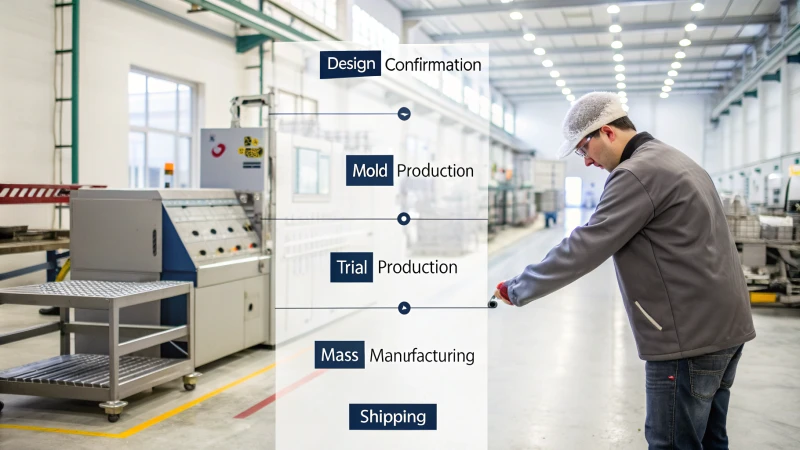
Confirm the Design Drawings
The initial step is to ensure the product design drawings are accurate and meet the client’s requirements. Collaboration with a design team is crucial here. Once confirmed, the drawings serve as a blueprint for the mold creation1.
Mold Production
Creating molds is a critical phase that varies in duration depending on the size and complexity of the profile. For example, molds for profiles less than 150mm might take 7-8 days. Larger molds, like those over 250mm, can take up to 17 days. Special designs like high-density heat sinks require longer production times.
| Diagonal Size (mm) | Mold Production Cycle (days) |
|---|---|
| <150 | 7-8 |
| 150-200 | 10 |
| 200-250 | 12 |
| 250-350 | 15-17 |
Trial Production Samples
Once molds are ready, a trial production phase begins. This involves nitriding the molds for hardening, followed by extrusion to produce initial samples. Customers review these samples to ensure they meet all specifications. If not, mold adjustments are necessary until satisfactory samples are achieved.
Mass Production and Surface Treatment
Upon sample approval, mass production commences. The aluminum profiles are extruded and undergo various surface treatments such as oxidation, spraying, or wood grain finishes. This stage typically takes 15-18 days.
Quality Control and Shipping
Quality checks are performed to confirm that profiles meet all standards before packaging and shipment. This ensures that customers receive defect-free products. The entire process spans approximately 20-25 days under normal circumstances.
Special Circumstances
In urgent situations, processes can be expedited within 7-10 days, but this requires exceptional coordination across all stages of production.
For further understanding of each stage, you can explore how these processes impact cost considerations2 and design guidelines3.
Mold production takes 7-17 days based on profile size.True
Smaller molds take 7-8 days; larger ones up to 17 days.
Mass production includes oxidation and spraying treatments.True
After extrusion, profiles undergo surface treatments like oxidation.
How Does Mold Size Affect Production Time?
Mold size is a crucial factor in the manufacturing process, influencing both production time and efficiency. Larger molds typically require more time and resources to produce, impacting overall timelines.
Mold size directly affects production time as larger molds take longer to manufacture due to increased material requirements and complexity. Smaller molds typically have shorter lead times, facilitating faster production cycles.
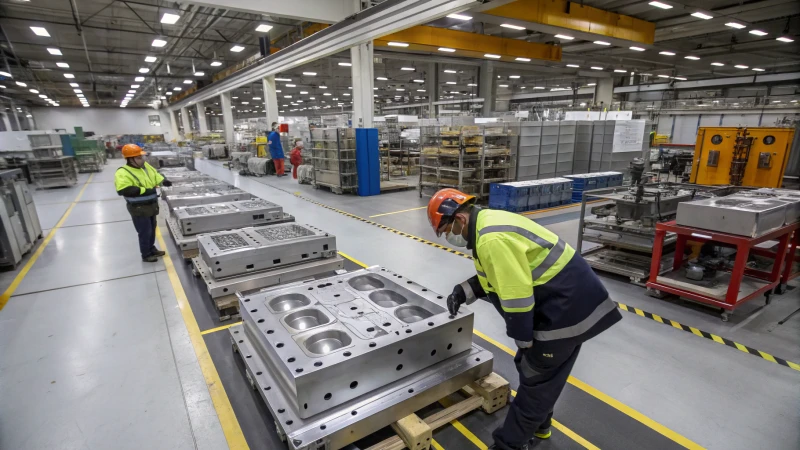
The Relationship Between Mold Size and Production Time
Understanding the impact of mold size on production time involves examining several factors, including the complexity of the mold design and the material used. Larger molds demand more material resources4, increasing both cost and production time.
Factors Influencing Mold Production Time
-
Material Requirements
Larger molds often need more raw materials, which can extend the lead time for obtaining these materials and ultimately prolong the production process. Additionally, the quality of materials5 used can also affect the time needed for mold creation.
-
Design Complexity
Complex designs require intricate detailing, which is more time-consuming. This is especially true for precision products that demand high-density molds with tight tolerances.
Impact on Manufacturing Timelines
| Mold Size | Production Cycle |
|---|---|
| <150mm | 7-8 days |
| 150-200mm | 10 days |
| 200-250mm | 12 days |
| 250-350mm | 15-17 days |
The table above highlights how mold size influences production cycles. As mold size increases, the number of days required for production rises significantly.
Streamlining Production Processes
To mitigate the delays caused by larger molds, manufacturers can adopt advanced manufacturing technologies6. These technologies can enhance efficiency by automating certain aspects of the production process, thus reducing the overall timeline.
Role of Trial Production Samples
Once a mold is completed, it undergoes a trial phase where samples are produced and evaluated. Any necessary adjustments during this phase can further extend production time. The complexity of the product being molded often dictates how long this trial period lasts.
Potential Solutions and Considerations
Employing a modular design approach or considering scalable mold design strategies7 may help in managing larger projects more efficiently. This approach can facilitate quicker adjustments and reduce overall production timelines.
Larger molds require more production time than smaller ones.True
Larger molds need more materials and intricate detailing, increasing time.
Advanced technologies cannot reduce mold production time.False
Advanced technologies automate processes, reducing overall production timelines.
Why Is Sample Approval Crucial Before Mass Production?
Before committing to mass production, confirming that the product meets design specifications is vital. Sample approval serves as a checkpoint, ensuring quality and consistency, while preventing costly errors.
Sample approval is crucial because it ensures that the product meets all design and quality standards before mass production. This process helps prevent costly mistakes, maintain quality consistency, and satisfy customer expectations.
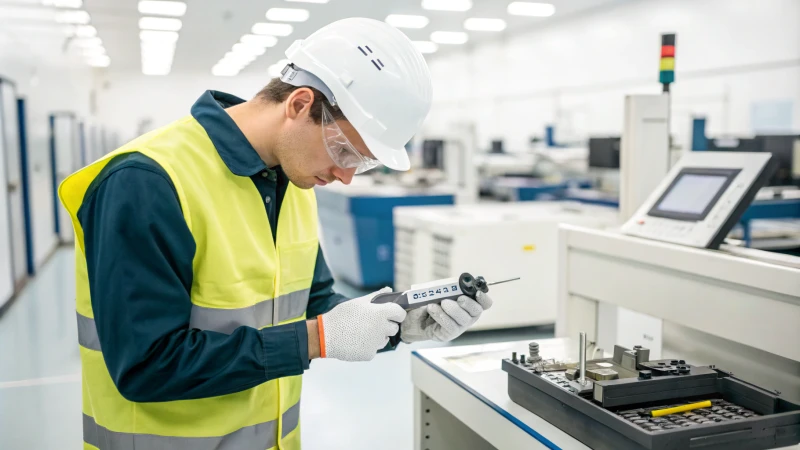
Understanding the Role of Sample Approval
Sample approval acts as a quality assurance mechanism, bridging the gap between design concept and actual product output8. By evaluating a physical sample, stakeholders can identify any discrepancies or areas for improvement. This step is vital for maintaining consistency.
The Concept of a ‘Golden Sample’
A ‘Golden Sample’ is an ideal representation of the final product. It sets a benchmark against which all subsequent production units are compared. This ensures that each product leaving the factory aligns with expected standards. Understanding the importance of this concept can help minimize production errors.
Benefits of Sample Approval
-
Cost Efficiency: Detecting errors early can save resources. Consider adjusting designs9 or materials before mass production starts.
-
Quality Assurance: Consistent quality is paramount. Approving samples before mass production guarantees that any issues are addressed promptly.
-
Customer Satisfaction: Delivering a product that meets promised specifications builds trust and fosters repeat business.
| Benefit | Description |
|---|---|
| Cost Efficiency | Identifies design flaws early, saving time and resources. |
| Quality Assurance | Ensures uniformity in production, upholding the brand’s reputation. |
| Customer Trust | Aligns final products with customer expectations, enhancing satisfaction. |
Mitigating Risks with Sample Approval
Without sample approval, risks such as design mismatches and material inconsistencies may arise. Implementing this step in your production process minimizes these risks by providing an opportunity to test and validate.
Consider this scenario: A batch of aluminum profiles must meet specific dimensions. By approving a sample, you ensure these profiles will fit their intended use, thus avoiding costly redesigns or recalls.
For more on maintaining quality, explore quality control methods10 in manufacturing processes.
Integrating Sample Approval into Your Process
To effectively implement sample approval, establish clear communication channels between designers, manufacturers, and quality assurance teams. Define criteria for sample evaluation to ensure that all stakeholders are aligned.
For example, in aluminum profile manufacturing, dimensions, finish, and structural integrity could be key criteria for sample assessment. By documenting these standards, you create a clear roadmap for quality maintenance.
Explore different communication strategies11 to streamline this process.
Sample approval guarantees product quality.True
Sample approval ensures products meet design and quality standards.
Skipping sample approval increases production errors.True
Without sample approval, design mismatches and inconsistencies may occur.
What Are the Options for Expedited Production?
In today’s fast-paced market, businesses often need to accelerate production to meet urgent demands. But what are the actual options available for expedited production?
Expedited production options include prioritizing order processing, optimizing production schedules, utilizing advanced technologies, and collaborating with suppliers for faster material delivery. Each approach offers distinct advantages in reducing lead times effectively.
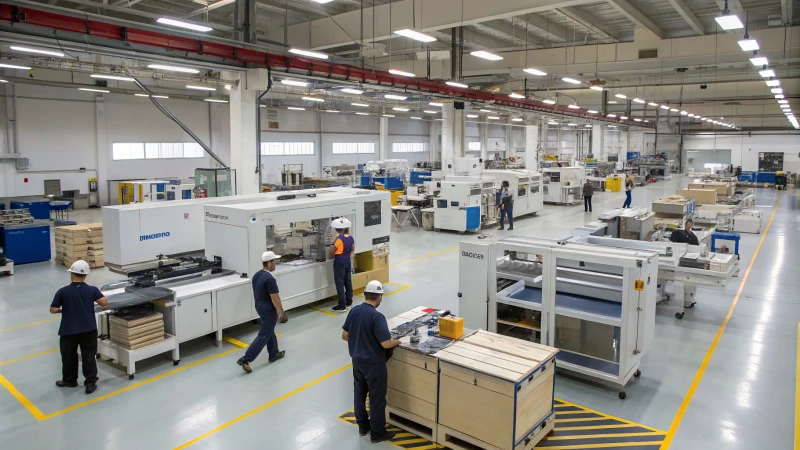
Streamlined Order Processing
To expedite production, companies can start by optimizing their order processing system. This involves automating order entries and approvals, reducing paperwork, and ensuring clear communication channels between departments.
Flexible Production Scheduling
Adopting a more flexible production schedule is crucial. By implementing dynamic scheduling12, companies can swiftly adapt to changes in demand. This often requires a robust system to monitor resource availability and allocate tasks efficiently.
Advanced Manufacturing Technologies
Utilizing cutting-edge technologies like 3D printing13 and CNC machining can drastically reduce manufacturing time. These technologies not only accelerate the production process but also ensure higher precision and quality.
| Technology | Benefits |
|---|---|
| 3D Printing | Rapid prototyping and customization |
| CNC Machining | High precision and repeatability |
Supplier Collaboration for Quick Material Access
Engaging with suppliers who offer expedited shipping options or maintain inventory for quick dispatch is vital. Building strong relationships with suppliers can ensure quick material access14 even during peak demand periods.
Outsourcing for Speed
Outsourcing certain production stages to third-party manufacturers who specialize in quick turnarounds can be a viable option. This allows businesses to focus on core competencies while meeting tight deadlines.
Importance of Communication
Effective communication across all levels of production and supply chain management is critical. Clear instructions and real-time updates prevent delays and keep all stakeholders aligned towards faster delivery times.
Automating order entries reduces production time.True
Automation speeds up order processing by minimizing manual tasks.
Outsourcing always slows down production timelines.False
Outsourcing can speed up production by leveraging specialized expertise.
How Can You Ensure Quality and Timeliness with Your Supplier?
In today’s competitive market, ensuring quality and timely delivery from suppliers is crucial for maintaining customer satisfaction and achieving business success. Here’s how you can manage this effectively.
To ensure supplier quality and timeliness, establish clear communication, set performance metrics, and conduct regular evaluations. Utilize technology for real-time tracking and build strong relationships to align goals and expectations.

Effective Communication is Key
Open lines of communication15 with your supplier can significantly impact the quality and timeliness of deliveries. Schedule regular meetings to discuss production schedules, address any issues, and ensure both parties are on the same page. Use collaborative tools such as Slack or Trello to maintain continuous contact.
Set Clear Performance Metrics
Define specific performance indicators like order accuracy, lead time, and defect rates. Create a performance table16:
| Metric | Target | Current Performance |
|---|---|---|
| Order Accuracy | 98% | 95% |
| Lead Time (days) | 15 | 18 |
| Defect Rate | <1% | 2% |
Conduct Regular Evaluations
Regular assessments of supplier performance help maintain standards. Implement a quarterly review process17 to evaluate metrics and address any deviations from expected outcomes. Include feedback sessions to encourage improvement.
Leverage Technology for Real-Time Tracking
Invest in supply chain management software that offers real-time tracking of shipments and alerts for delays. This enables you to make informed decisions swiftly and keep your customers updated.
Build Strong Relationships
Strong supplier relationships are built on mutual trust and understanding. Engage with your suppliers beyond transactions by visiting their facilities, learning about their processes, and sharing your company’s vision and values. Such practices foster loyalty and ensure that your suppliers are committed to meeting your quality standards.
Align Goals and Expectations
Ensure that your supplier’s objectives align with your business goals by sharing detailed specifications18 and expectations upfront. This minimizes misunderstandings and sets a solid foundation for collaboration. Using a detailed contract or service level agreement (SLA) can help reinforce these expectations.
Special Circumstances Handling
Sometimes, unforeseen events demand urgent action. Develop an emergency response plan with your suppliers to handle such situations efficiently. This might include green-lighting19 certain processes to expedite production without compromising quality.
Implementing these strategies can significantly enhance your ability to maintain high standards of quality and timeliness with your suppliers, ultimately leading to improved customer satisfaction and business growth.
Effective communication impacts delivery quality.True
Open communication channels help address issues promptly, ensuring timely deliveries.
Quarterly reviews are unnecessary for supplier evaluation.False
Regular evaluations ensure suppliers meet performance standards and encourage improvement.
Conclusion
Custom aluminum profiles typically take 20-25 days from design to shipment, with expedited options available in 7-10 days under special circumstances.
-
This link explains the detailed process of mold creation, essential for understanding initial production stages. ↩
-
This link provides insights into how different stages of production influence overall costs. ↩
-
This link offers comprehensive guidelines to help you design efficient and cost-effective aluminum profiles. ↩
-
Explore how material resources impact mold creation and their role in extending production timelines. ↩
-
Learn why high-quality materials are crucial for efficient mold manufacturing processes. ↩
-
Discover technologies that can streamline mold production and reduce lead times. ↩
-
Find strategies for scalable mold designs to optimize large-scale manufacturing projects. ↩
-
Discover why evaluating product samples is essential to ensure final products meet quality standards. ↩
-
Learn how to refine your product designs using feedback from approved samples. ↩
-
Explore various methods to maintain high-quality standards during manufacturing. ↩
-
Find out how to improve communication between teams to streamline production processes. ↩
-
Learn how dynamic scheduling can optimize your production process by adapting to real-time changes in demand. ↩
-
Discover the benefits of 3D printing in reducing lead times and enhancing customization. ↩
-
Explore ways to collaborate with suppliers for faster delivery of materials and components. ↩
-
Discover effective methods for enhancing supplier communication to ensure seamless operations. ↩
-
Identify essential metrics that help in evaluating supplier performance accurately. ↩
-
Learn steps to implement a structured supplier review process. ↩
-
Find ways to ensure that supplier objectives align with your business needs. ↩
-
Understand the concept of green-lighting for expedited processes in supply chains. ↩



